
Melina Grin / Cats.com
Welcome to our comprehensive guide to understanding cat body language. Cats use body language to communicate their emotions and intentions with their owners and other pets. They are sensitive beings and communicate subtly, making reading more challenging than dogs.
To understand your cat, you must consider its body language, behavior, vocalizations, and context. This guide will help you recognize when your cat is calm, fearful, frustrated, or protective and strengthen your everlasting relationship.
Cat Facial Features and Expressions
Cat Facial Expressions

Cats can express their feelings through 276 distinct facial expressions, with changes in head position revealing signs of pain or discomfort. Melina Grin / Cats.com
Cats have distinctive facial features and can produce 276 morphologically distinct facial expressions during social interactions with intraspecies. These changes can be subtle or obvious and can be voluntary or involuntary. When pain sets in, your cat’s head will align with the shoulder; in severe pain, it will be below the shoulder line or tilted down with the chin towards the chest.
Cat Eyes

A cat’s pupils remain normal in a relaxed state, but they dilate when stressed, in pain, or excited, reflecting their mood and level of stimulation. Melina Grin / Cats.com
In a relaxed state, your cat’s pupils are usually normal and not dilated, although this will depend on ambient light. When your cat is stressed, in pain, overstimulated, or in play/hunting mode, its eyes will be wide open, and its pupils will dilate.
A mildly anxious cat may also stare, looking as though they are focused intensely on an object. In contrast, a fearful cat will avoid eye contact with the stressor altogether, either by closing his eyes or turning his head.
A cat’s blinking and gaze can indicate its emotional state. Slow blinking may signal relaxation and contentment, whereas rapid blinking might indicate fear or discomfort. The direction in which a cat looks may also reveal its emotional state. A leftward gaze may be associated with negative emotions.
Cat Ears

A relaxed cat has neutral ears that may face forward or sideways, while erect ears indicate a positive mood or assertiveness toward other cats. Melina Grin / Cats.com
When a cat is relaxed, its ears remain neutral, face forward, sideways, or a combination of both. Sometimes, one ear may move sideways to listen to surrounding sounds. Ears erect and facing forward usually indicate that a cat is in a positive state, whether relaxed or exploring. However, this ear position can also occur when a cat is offensive towards another cat, such as blocking access to a resource.
Flattening and rotating the ears in cats, often called “airplane ears,” typically occurs when a cat is experiencing negative emotions. Studies have indicated that cats tend to flatten their ears downwards or back against their heads when feeling severe anxiety or fear, especially when they are near or interacting with a stranger (Bennett et al., 2017) [3].
Moreover, a person’s approach can cause terrified cats’ ears to flatten so much that they are no longer visible, giving the cat a rounded head shape. It’s best to keep your distance and don’t advance further.
Siniscalchi and colleagues (2016) [8] found that cats tend to rotate their left ear and turn their heads in response to threatening sounds, like a dog vocalizing, and rotate their right ear in response to sounds like cats meowing and purring.
Cat Mouth

A relaxed cat typically keeps its mouth closed, but a stressed cat may open its mouth, pant, or vocalize distress through hissing or spitting. Melina Grin / Cats.com
When a cat is chilled, its mouth will usually remain closed unless it performs the Flehmen response. A stressed cat’s mouth will either open or pant, and the cat may vocalize distress by hissing or spitting.
A nervous or anxious cat may lick its lips, flick its tongue over its nose, or stretch its mouth. If you notice negative signs such as tongue licking on top of the nose, head shaking, head-turning sharply with pupil dilation, or short, low-pitched meow sounds while stroking your cat. In that case, it indicates that your cat isn’t enjoying physical contact, and you should cease interaction.
Cat Teeth

Cats exhibit stress or anxiety in various ways, including teeth grinding, and may hiss or yowl when feeling threatened. Melina Grin / Cats.com
Cats can exhibit signs of stress or anxiety in various ways, including teeth grinding. When a cat feels fearful, threatened, or needs to defend itself, it may open its mouth to show its teeth or emit a hiss or a yowl. So, don’t mistake that for a smile and back off!
Cat Tongue

Your cat may express affection by gently licking your face or head, a sweet gesture of love and bonding. Melina Grin / Cats.com
A cat’s tongue has tiny, backwards-facing barbs made of keratin that help groom and remove dirt and fleas. Cats also use their tongue to communicate with other cats through allogrooming, where they lick each other’s fur around the face, head, and neck. Your cat may show affection by licking your face or head.
Cats may stick their tongues out periodically for various reasons, including behavioral, physical, and health-related. This behavior is typical for most cats when inhaling scents, performing daily activities, or showing signs of relaxation or fatigue.
However, in some cases, a protruding tongue may indicate your cat is anxious, in pain, feels nauseated or has a health concern that requires a vet visit.
Cat Nose

Cats rely on their strong sense of smell to interpret scents like food and people, using nose touches to greet each other and establish connections. Melina Grin / Cats.com
Cats have a strong sense of smell, interpreting different scents such as food and approaching people. They use their sense of smell to determine whether a scent is pleasant or aversive. Cats also use nose touching to greet each other and establish group membership.
When meeting a cat for the first time, offering your finger allows them to investigate your scent. Many cats also show affection through nose kisses. You might notice cats wrinkling or licking their nose when frustrated or anxious.
Cat Whiskers

When a cat is calm or affectionate, its whiskers are held straight and to the side, but they push forward when the cat is alert, excited, or curious. Melina Grin / Cats.com
Cats have 24 whiskers on their cheeks (12 on each side), with extras above the eyes and on the back of the forelegs. Whiskers help cats detect air pressure, locate objects, and traverse their environment.
When a cat is calm or displaying affection toward you, its whiskers are held straight and to the side. Whiskers push forward when a cat is alert, excited, or curious. During a startle response, a cat will orient its eyes, ears, and possibly whiskers toward the stimulus.
However, when frightened, angry, or ready to strike at another cat or human, its whiskers will pull back against its cheeks, serving as a warning sign.
Cat Body Postures and Their Meanings
To understand a cat’s emotional state and intentions, please consider its body postures, behavior, facial expressions, and context. While body postures can provide an overall impression, facial expressions can change rapidly in response to circumstances, offering more immediate information.
Therefore, it is crucial to interpret both postural and facial expressions together. Focusing on changeable facial expressions is essential to accurately assess your cat’s feelings when there is a difference between the two.
What Do the Different Cat Body Postures Mean and Look Like?
The Confident or Relaxed Cat

When a cat feels comfortable, it may lie on its side or back, exposing its belly—a sign of calmness, alertness, and openness to interaction. Melina Grin / Cats.com
A confident cat moves gracefully, standing upright with its tail held high. This posture shows that the cat is ready to explore its surroundings and interact with others in a friendly manner. The cat’s upright tail signifies its welcoming nature, while its forward and erect ears indicate alertness and readiness for engagement. Your cat says, “I am happy and feeling well, and you’re welcome to approach me”.
When a cat feels comfortable and relaxed, it may stretch out on its side or lie on its back, exposing its belly. This posture indicates that the cat is calm but alert and open to being approached.
The Exploratory Cat
When a cat is on the prowl, its body language may include a slightly curved tail, and the tail may swivel in different directions. The cat may also crouch lower to the ground while investigating its surroundings and the situation. It’s best to remain still and use a soft voice to not startle your feline companion.
The Anxious Cat

A worried cat may crouch into a ball, dilate its eyes in bright light, avert its gaze, or fake sleep with closed eyes—signs of stress or discomfort. Melina Grin / Cats.com
A cat may exhibit several physical and behavioral signs when it becomes worried. These may include crouching into a ball to make itself appear more petite than usual, dilating eyes in a well-lit room, averting its gaze, or closing his eyes while faking sleep, which could indicate stress or pain.
Additionally, the cat’s ears may rotate backwards or partially outward, its muscles may tense, and it may be poised to escape if necessary. The tail may be held close to the body, sometimes wrapped around the feet, and the head may be held down and pulled into the shoulders. Your cat says, “Please give me space.”
The Frustrated Cat
Cats can get frustrated when they feel a loss of control, such as being locked indoors (for indoor/outdoor cats), confined to a specific part of the house, or caged at a vet clinic. Another cause is being unable to access their regular resources or defend them.
The signs of a frustrated cat are subtle and complex to recognize. They include tail swishing, pacing, pawing at the door, avoiding human interaction, and displaying redirected aggression. If a cat is frustrated because it cannot go outdoors or access food, its meows may be more prolonged and frequent.
The Fearful Cat

When a cat perceives a threat, it may attempt to flee, but if escape isn’t possible, it may crouch and display signs of nervousness like tongue flicking, rapid breathing, and a trembling body. Melina Grin / Cats.com
When a cat perceives a potential threat to its safety, it will create distance between itself and the source of fear. It goes into a flight or fight mode. If unable to escape, a cat may crouch or exhibit nervousness, such as flicking its tongue over its nose, rapid breathing, and a still or trembling body.
The cat’s tail may be close to its body, either curled forward or positioned close to its body while standing. Additionally, its pupils will fully dilate, and its ears will flatten. The cat may also vocalize fear through meowing, growling, or yowling.
Likewise, a scared cat may display the “Halloween pose.” The “Halloween cat pose” is a defensive posture cats display when feeling threatened or startled. It involves the cat arching its back upwards, often accompanied by raised hind legs, a lowered head, and sometimes a raised or puffed-up tail.
This behavior makes the cat appear larger and more intimidating to prevent potential threats. Your cat says, “I am terrified, and it’s best to leave me alone”.
Distance-Reducing Behaviors Vs Distance-Increasing Behaviors
Visual signals communicate a cat’s desire to either increase or decrease distance. Aggressive signals, which indicate the cat’s intention to create space between individuals, are known as distance-increasing signals. On the other hand, friendly or positive signs, known as distance-decreasing signals, show the cat’s intention to reduce distance.
Distance Reducing Behaviors

Scent rubbing is a friendly gesture where a cat transfers calming pheromones, fostering positive interactions with humans. Melina Grin / Cats.com
Distance-decreasing signals are typically directed only towards familiar individuals with whom the cat wants to interact. They encourage an approach and social interaction and convey that the cat means no harm.
Scent rubbing behavior is often seen as a sign of friendliness and can lead to positive interactions with the cat. When a cat rubs against a person’s hand, it transfers scent pheromones, which have a calming effect on the cat.
Likewise, the social roll in which a cat turns on its back and exposes its tummy is another behavior cats use to communicate friendly intent and an invitation to approach. Remember that though your cat may expose its belly to you, it will not necessarily respond well to a belly rub.
Distance Increasing Behaviors

Distance-increasing behaviors in cats are visual signals used to maintain space and protect territory, often directed at unfamiliar animals or people when they feel threatened. Melina Grin / Cats.com
Distance-increasing behaviors in cats play a significant role in their communication. These behaviors, which aim to keep others at a distance, are visual signals cats use when they feel their territory or resources are threatened. They also use these signals towards unfamiliar dogs or people in certain situations.
Cats use various techniques to appear larger and more intimidating when warning off or displacing another animal or human. They appear larger by standing tall, raising their fur, dilating their pupils, and displaying aggressive body language such as arching their back, thrashing their tails, and showing their claws.
Defensive and Offensive Aggression
When a cat feels trapped in an unwanted interaction with a more dominant animal or human or perceives a threat to its safety or resources, it gets ready to defend itself.
Defensive Aggression

A cat showing defensive aggression pulls back its ears, tenses its body, and bares its teeth, signaling fear and a readiness to defend itself. Phan Thị Thu Trang / Unsplash.com
When a cat displays defensive aggression, its ears will pull back, its head and neck will pull tight against its body, and its facial muscles will tense, showcasing its teeth. The cat may also roll slightly to one side to expose its claws. A cat may growl, yowl, and may even bite. The cat is fully prepared to protect itself and attack anything in this posture.
Offensive Aggression

When a cat exhibits offensive aggression, it leans forward with constricted pupils, raised rump, and forward-facing ears, signaling readiness to attack—avoid grabbing it during this state. Melina Grin / Cats.com
When a cat displays offensive aggression, its pupils constrict, it leans forward, and its ears and whiskers are also forward. The tail is inverted and then drops down. The rump raises higher than the front, and the cat stares at its opponent, growling in discontent. It’s crucial to remember not to try to grab your cat when it’s in fighting mode, as it will attack you.
Cat Vocalizations Meaning
Cats use various vocalizations to convey different messages. They purr when content or in pain, meow for attention or food, trill to greet, and chitter when fixated on prey. They also make intense sounds like hissing, yowling, spitting, or growling when they feel danger or negative emotions like fear, frustration, and pain. It’s their way of saying, “Watch out, I mean business!”
Cat Tail Movement Meaning

Melina Grin / Cats.com
We’ve delved into the fascinating world of cat body language and learned much about the significance of a cat’s face, body and tail. But there’s one more crucial aspect to consider: tail movement. A swiftly moving tail often signifies heightened arousal, which can be positive or negative.
Additionally, each cat has unique tail movements and carriage when relaxed, so observing what’s normal for your specific feline is essential. What might indicate relaxation for one cat could signal increasing arousal and discomfort in another, so paying attention to these nuances is vital.
Frequently Asked Questions
How do you tell if a cat loves you?
Cats have unique ways of expressing affection that people more familiar with dogs often misunderstand. They show love through facial rubbing, head bunting, and rolling over to expose their belly as a sign of trust.
Purring, kneading and gentle love bites are common ways cats show their fondness. Additionally, cats may communicate their affection through various vocalizations and even by engaging in slow blinking, which is a way for them to convey their love and trust.
How to tell if your cat is in pain?
Pain-induced behavioral changes in cats are unique and can be subtle. Changes in eating or drinking, lethargy, litter box habits, mobility, grooming frequency, decreased social interactions, and uncharacteristic vocalizations can all indicate pain.
Keeping a diary to track your cat's health can be very helpful. Age is not a disease, so advocating for your cat's health and seeking proper care is essential.
Why do cats lift their bum when you pet them?
The 'elevator bum' is a peculiar behavior many confuse with a cat about to spray. This behavior involves a cat raising its rear end or tail upright and quivering sometimes. Contrary to popular belief, this behavior expresses enthusiasm and happiness, signifying the pleasure derived from your touch.
-
Scott, L., & Florkiewicz, B. N. (2023). Feline faces: Unraveling the social function of domestic cat facial signals. Behavioural Processes, 213, 104959. https://doi.org/10.1016/j.beproc.2023.104959
-
Ellis, S. L. (2018). Recognising and assessing feline emotions during the consultation: History, body language and behaviour. Journal of Feline Medicine and Surgery, 20(5), 445–456. https://doi.org/10.1177/1098612x18771206
-
Bennett, V., Gourkow, N., & Mills, D. S. (2017). Facial correlates of emotional behaviour in the domestic cat (Felis catus).
-
Julien, C. (2020, February 6). Cat behavior: Learn the language of cats. Alley Cat Allies. https://www.alleycat.org/cat-behavior-learn-the-language-of-cats/
-
1-Studio-1. (n.d.). Cat Behavior Described | Compiled by Dr Sarah Ellis and Dr Helen Zulch. Lincoln University. http://www.learnaboutcats.co.uk/
-
Care, I. C. (2020, September 01). Advanced Feline Behaviour for Vet Professionals Module 2 Senses and communication. UK. Retrieved September 10, 2024
-
Care, I. C. (2020, September 01). Advanced Feline Behaviour for Vet Professionals Module 4 What do I feel. UK. Retrieved September 15, 2024
-
W, Konderding, E, Zimmermann, E, Bleich, H, Hedrich and M, Scheumann. (2017, October 24). The head turn paradigm to assess auditory laterality in cats: influence of ear position and repeated sound presentation NCBI. Retrieved September 20, 2024, from https://www.ncbi.nlm.nih.gov/pmc/articles/PMC5659213/

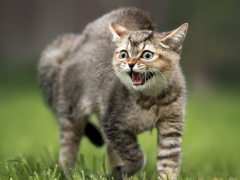
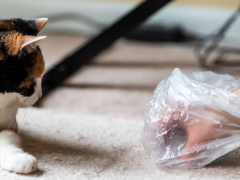
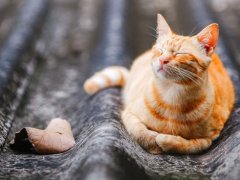
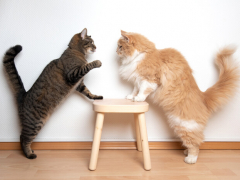
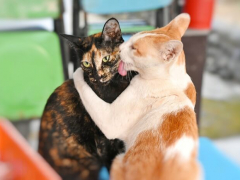
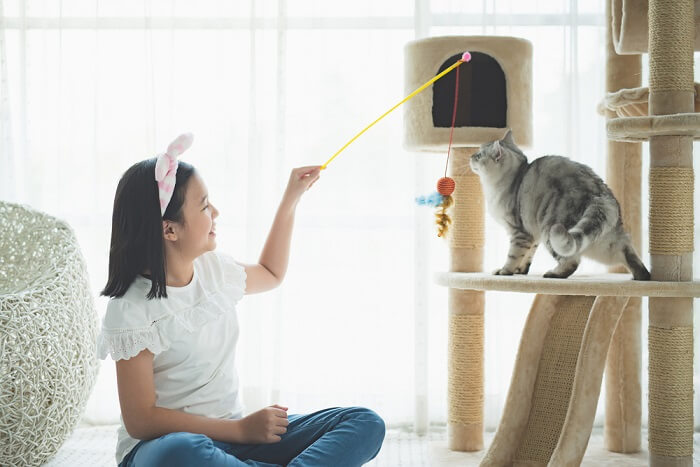
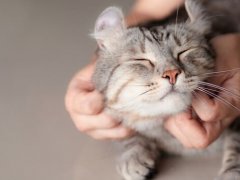
Why is my cat sneezing
Hi Carole
There could be a few reasons your cat is sneezing.
A rare sneeze is a healthy reflex that helps remove minor irritants from a cat’s nose. However, if a cat is sneezing frequently, it may indicate a problem. This article outlines the common causes of sneezing in cats and provides guidance on how to address it: https://cats.com/cat-sneezing
I hope that helps
Melina